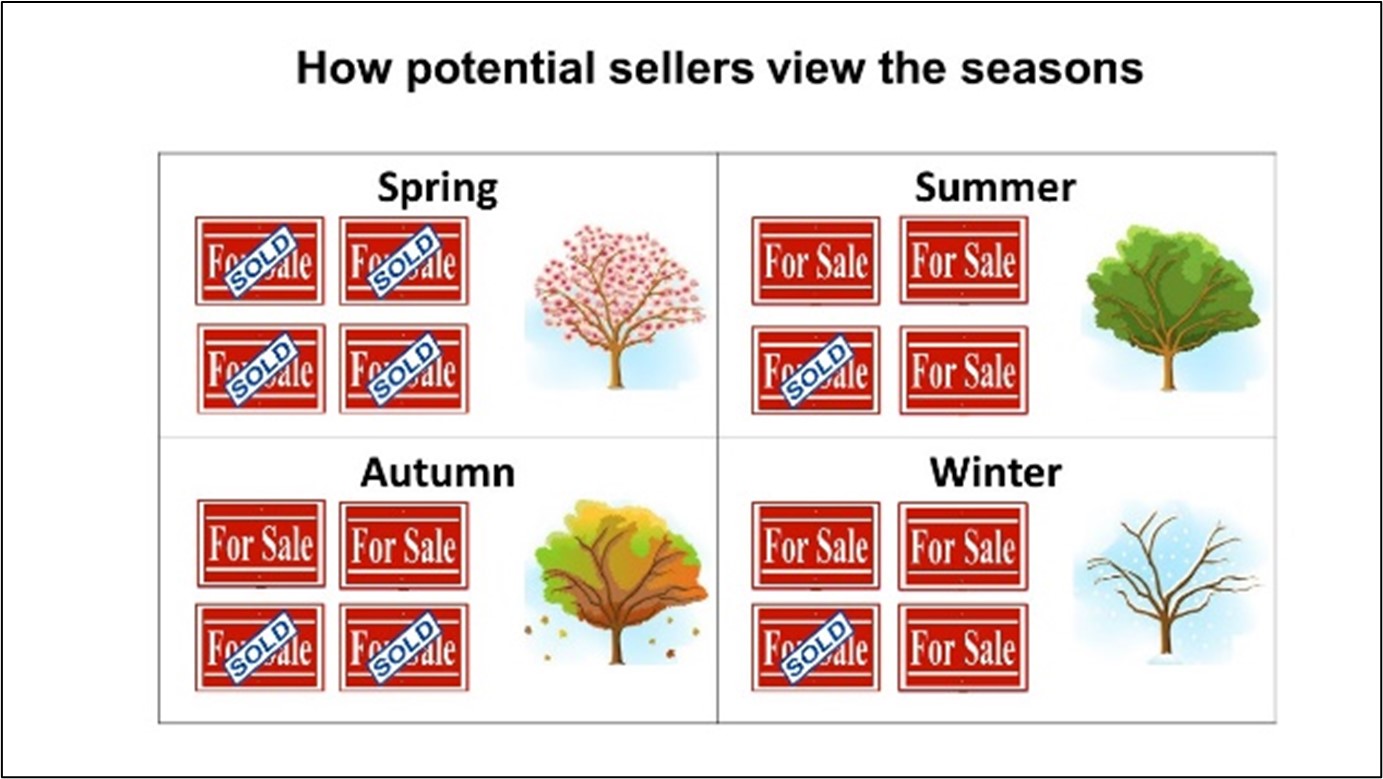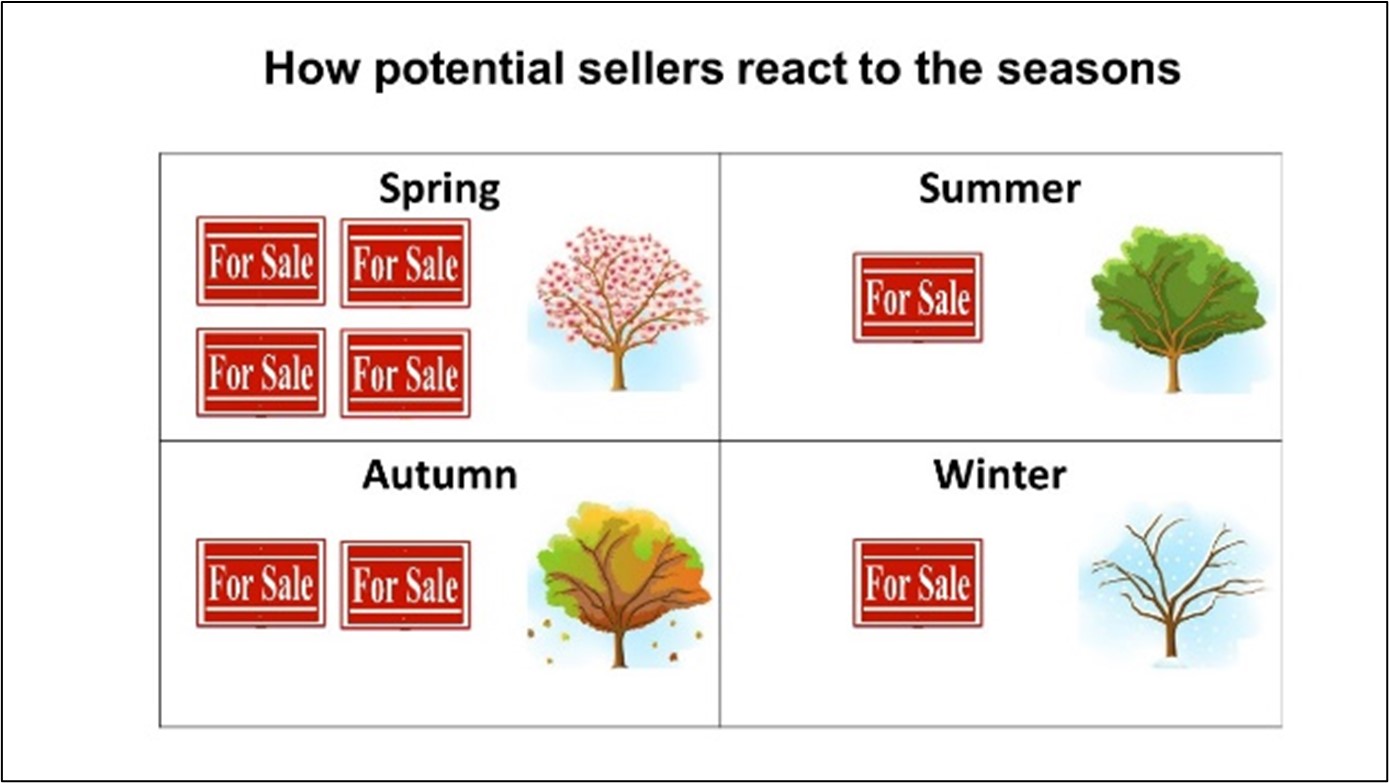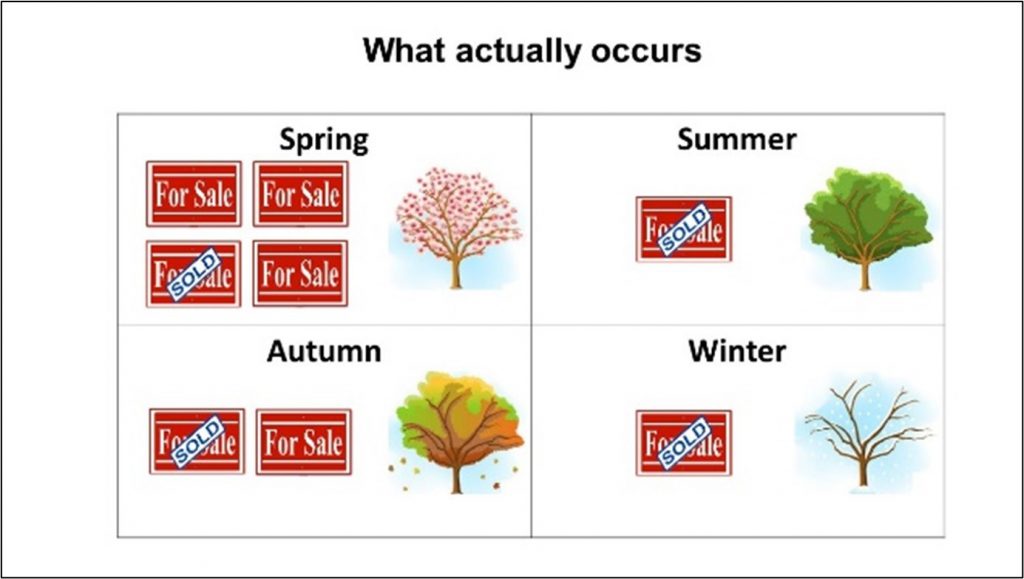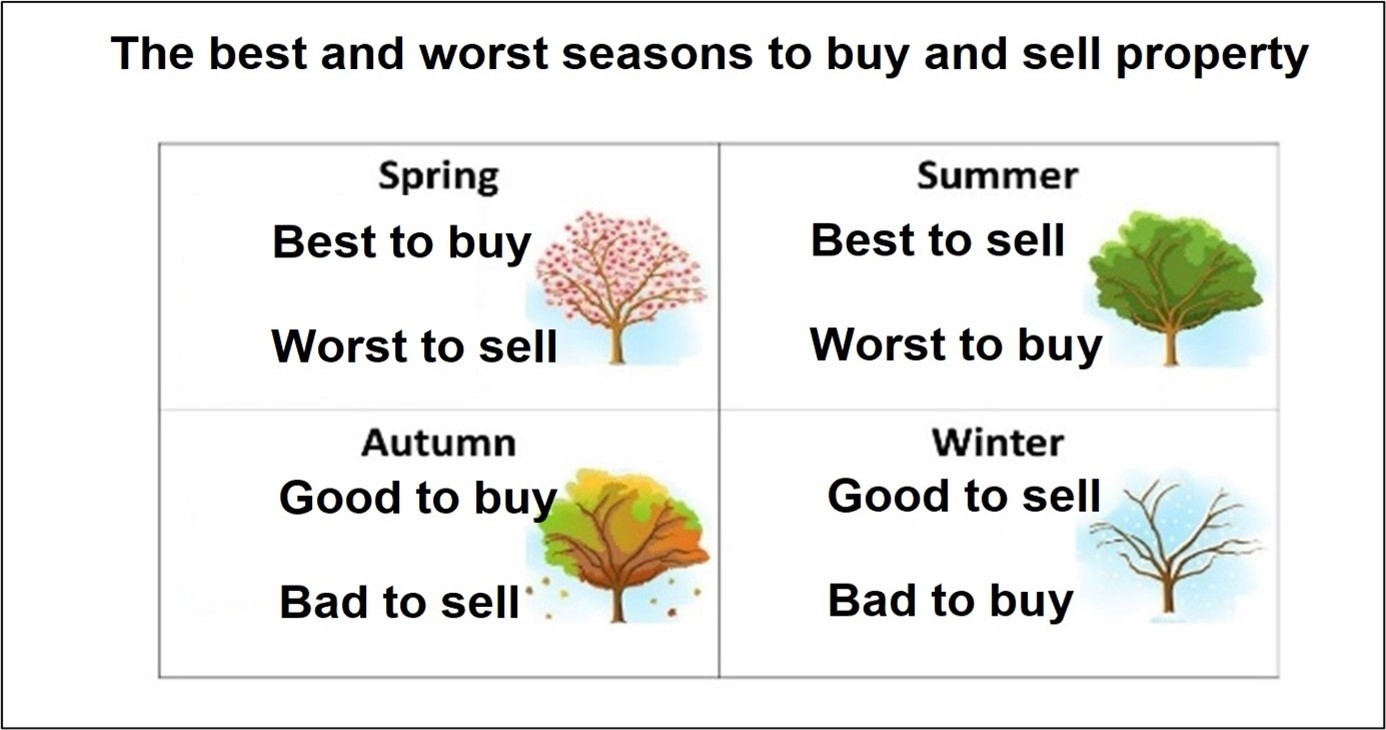The seasonality myth busted
As each spring approaches, so do those blogs and click baits assuring us that spring is the best time to sell a property. John Lindeman busts this urban myth wide open, explaining that it’s actually the best time to buy.

Potential sellers are often told that spring is the best time to sell their property and at first, this seems a no brainer.
The weather is warming up, gardens look their flowering best and buyers are returning to the property market in droves after hibernating during the long cold winter.
Sellers are also frequently warned that summer is not a good time to sell, because it’s too hot, with many prospective buyers on holidays and not concerned about buying property.
Even worse is winter they’re told, because the cold and wet weather deter all but the most enthusiastic buyers.

There are fewer listings in summer and more in spring
These perceptions have a definite effect on seller behaviour because they encourage fewer vendors list their properties for sale in summer or winter, believing that their homes will take longer to sell and bring in lower prices because there will be fewer potential buyers in the market.

They also motivate more potential sellers to list their properties for sale in spring because they think that there will be more buyers competing in the market.
They believe that their properties are likely to sell more quickly and for higher prices.
So, all else being equal, you can see that this thinking results in there being fewer properties listed for sale in summer and winter, and more properties on the market in spring and autumn. It is all based on the notion there will be fewer potential buyers in summer and winter and more in spring and autumn. So, is this really what happens?
Australia doesn’t have huge seasonal climate differences
The first issue is that “seasonality” originated in the USA where the weather changes dramatically with the seasons. That’s not the case in Australia – our winters are relatively mild and in cities with temperate or tropical climates such as Perth, Adelaide, Sydney, Darwin and Brisbane, winter is a good time to go house hunting while spring is already sometimes too hot.


Even in our colder winter cities such as Canberra, Hobart or Melbourne, fans flock in their thousands to watch football games and the weather is seldom harsh enough to keep people indoors for long. The seasons don’t affect buyer behaviour as they might in other countries, but there’s a far more important reason why buyer numbers don’t change.
Buyer numbers don’t change by the seasons
It’s simply because the way in which we search for properties has dramatically changed in recent years and now has little to do with the changing seasons.
Virtually all potential buyers no longer do their initial research by travelling from one real estate agent to the next or going on physical inspections, but by visiting on-line listing sites.
They do this all year round, whether it’s raining, snowing or sunny and from the comfort of their homes, at work or while on holidays.
They take virtual tours of a property, including all the rooms and even the surroundings, organise video walkthroughs of each room with the agent, take a virtual walk down the street with Street View and check out the local area with Google Earth.

As far as residential property buying goes, the internet has been a game changer and is the main reason that buyer searches are no longer seasonal in the way that they may have been many years ago. The idea that “spring is the best time to sell” has become an urban myth, and no longer has any connection with reality.

In short, there is no overall seasonal change in buyer demand patterns and the days when buyer demand rose in spring, or real estate agents were able to lock up their offices and go on summer holidays are long gone.
Yet the persistence of the seasonality myth encourages more vendors to try and sell in spring, and fewer to list properties in summer and winter. This has the exact opposite effect of what they think will happen.
Seasonality as perceived by potential sellers

This picture shows you how potential sellers think that seasonality works. They are told that there are more buyers searching for properties in spring and fewer in other seasons, especially during summer and winter, so they believe that by listing their properties in spring or autumn they will sell quickly and for the best price, because there are more potential buyers looking for properties.
This encourages more potential sellers to list in spring and fewer in summer

As a result of the seasonality myth, more potential sellers list properties for sale in spring, fewer in autumn, and even fewer again in summer and winter. This would be fine if the numbers of potential buyers followed the same seasonal pattern, but as we have seen, the numbers of potential buyers don’t change with the seasons.

This picture illustrates what actually takes place in the property market during each season. The numbers of buyers remain steady all year, but the numbers of listed properties rise in spring and fall in summer and winter.
Of course, there are many other dynamics that can move property market prices during the course of a year, such as interest rate changes and population growth or decline. But when these are taken out of the equation, seasonality itself has no impact, but the seasonality myth certainly does.
This means that spring is the best time to buy a property because there are more listings and vendors are competing for buyers, while summer or winter are the best times to sell because there are fewer listings and potential buyers are competing for properties.
